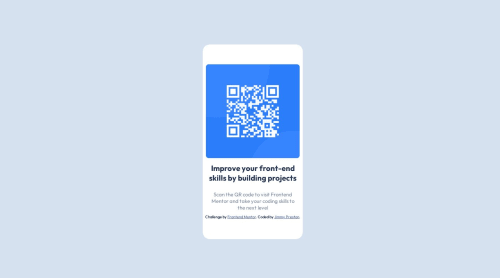Submitted over 2 years agoA solution to the QR code component challenge
HTML CSS QR Code Solution
@MonetCode88

Solution retrospective
The part I found most confusing was properly sizing my image to fit within the white container. I'm still unsure of how to optimize it properly and I know my solution isn't a perfect replica. I would welcome any advice on how to make this better.
Code
Loading...
Please log in to post a comment
Log in with GitHubCommunity feedback
No feedback yet. Be the first to give feedback on Jimmy's solution.
Join our Discord community
Join thousands of Frontend Mentor community members taking the challenges, sharing resources, helping each other, and chatting about all things front-end!
Join our Discord